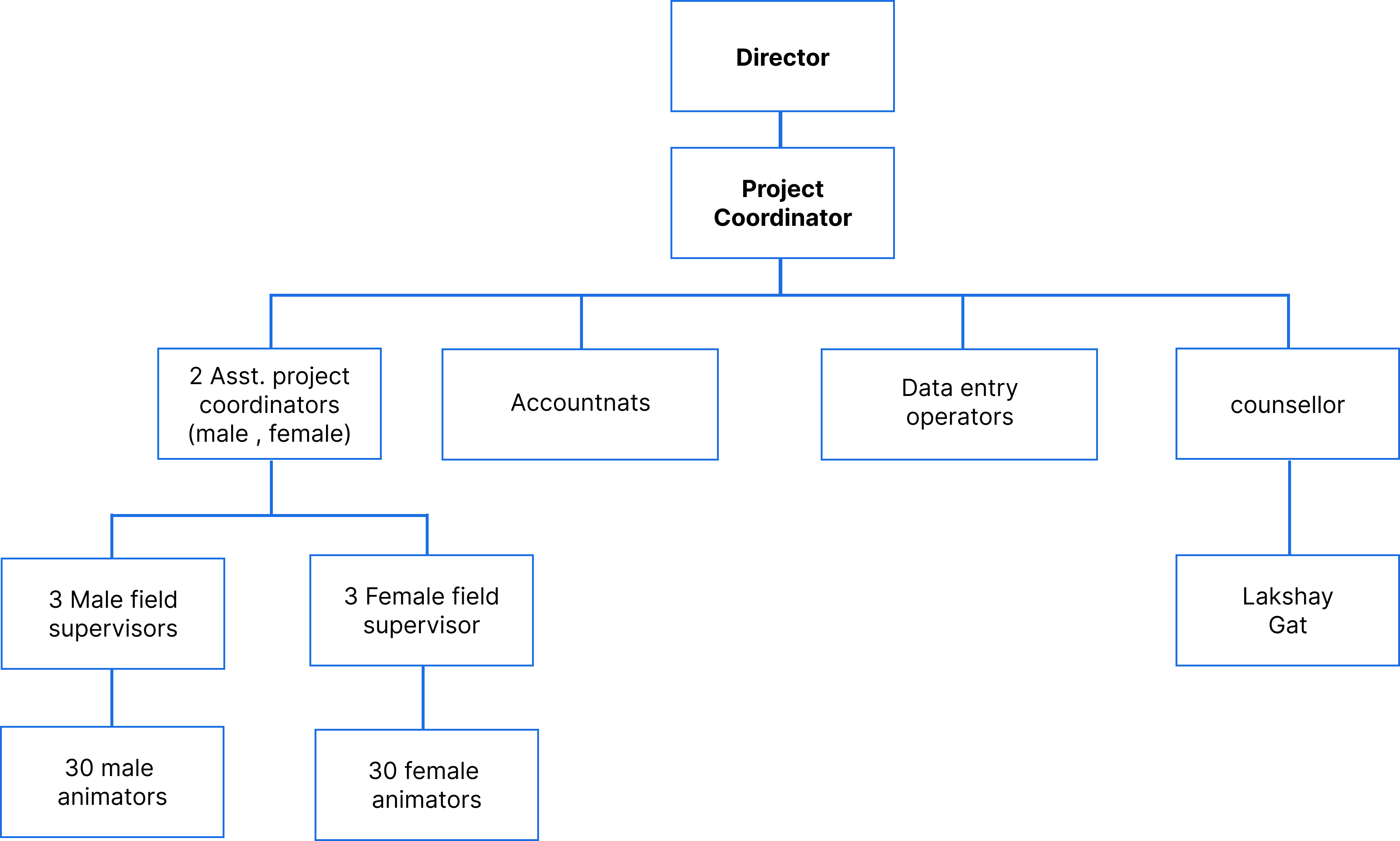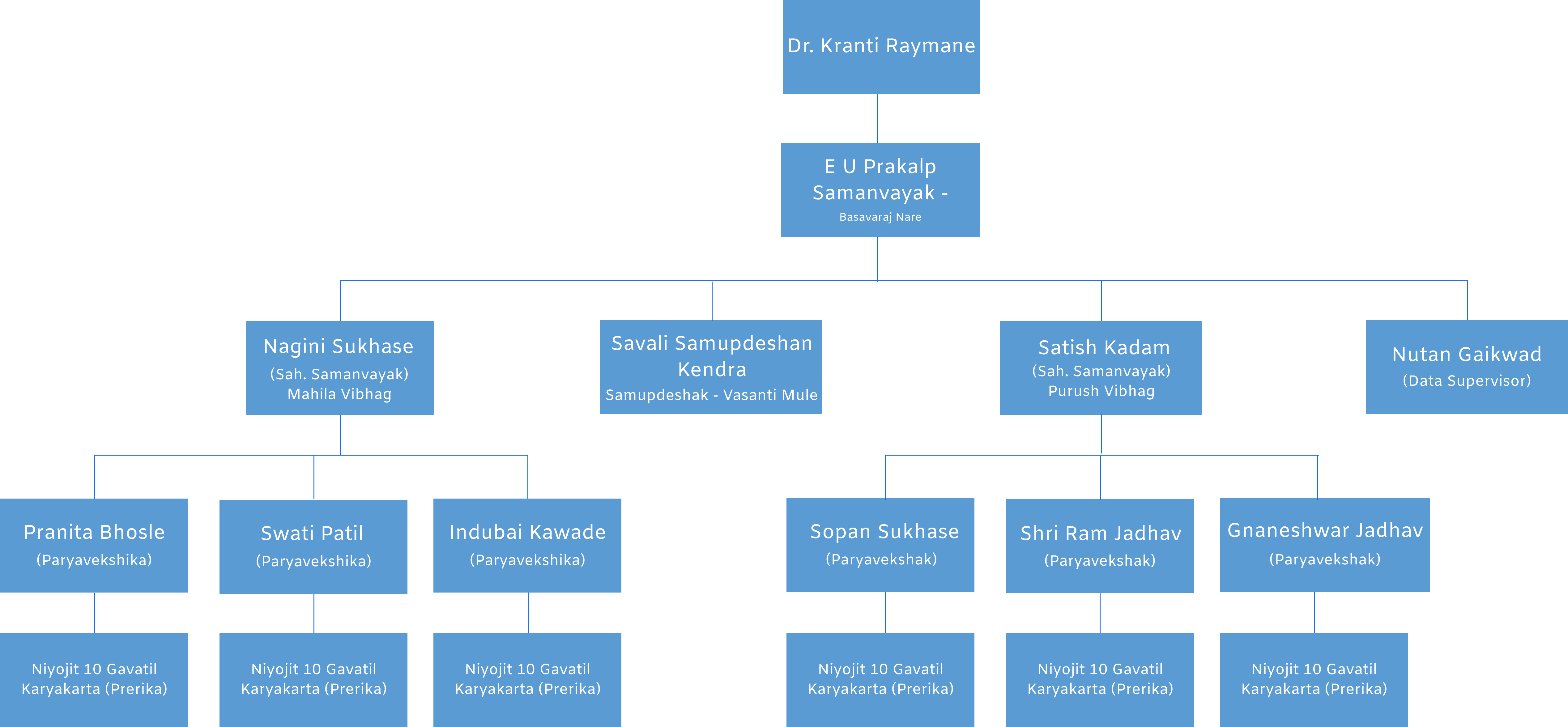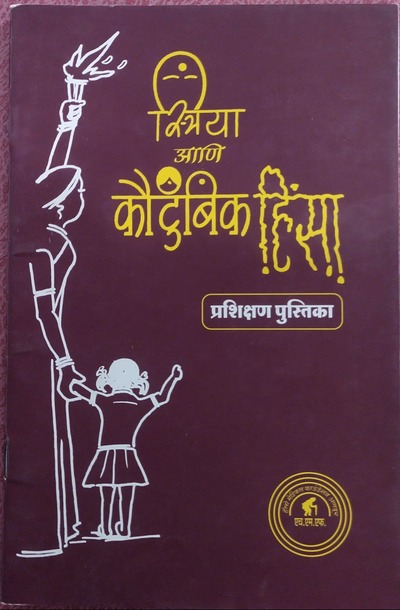Overview
Further to the interventions of the Towards Gender Equality Project that ended in 2022, amidst challenging circumstances of the COVID19 pandemic, a new 39 months project titled “Addressing Gender-based Violence and Discrimination particularly Domestic Violence and Child Marriage in Marathwada region of the State of Maharashtra, India” has been undertaken since January 2023. this project builds on previous efforts with additional components to further fulfill the objectives of the initiative
Key new elements include empowering adolescent girls to exercise their agency, promoting bystander intervention in domestic violence and child marriage situations, engaging with local Law Colleges for legal services, and engaging with its advisory and financial partner – SWISSAID, in developing Standard Operating Procedures (SOPs) for field workers and government stakeholders.
Key focus areas of this project are
- Empowering Girls and Women: Enhancing their knowledge and capacity to make autonomous decisions and control their lives.
- Engaging Boys and Men: Encouraging them to become supportive partners and change agents, challenging harmful social norms and ‘masculinities’.
- Promoting Bystander Interventions: Encouraging community members to intervene in domestic violence and child marriage situations.
- Strengthening Community Animators and Peer Educators: Building a robust cadre of trained men and women to support community efforts.
- Enhancing Capacities of Civil Society and Government Duty-bearers: Improving service delivery and coordination among stakeholders.
- Collaborating with Legal Aid Clinics: Involving Law Colleges, their students, and professors.
- Connecting with One Stop Centres: Facilitating access to comprehensive support services.
- Developing SOPs: Working with SWISSAID India to create guidelines for field workers of HMF and all government stakeholders in addressing domestic violence and child marriage.
Implementation site and population:
Location: 30 villages in the Tuljapur and Lohara blocks of the Dharashiv district, Maharashtra
Total population: 39,532.
- married women (13-45 years) : 4,788
- unmarried adolescent girls (13-19 years) : 1,318
- married men of age <=55 years : 4,911
- unmarried youths (18-24 years) : 1,702
Financial partners:
HMF serves as an implementing partner of the Swiss Foundation for Development Cooperation (SWISSAID) in collaborated with the European Commission for financial support.
Activities and outcomes: Year 1: (January 2023-December 2023)
TEAM FORMATION
- Implementing Team: A dedicated team was appointed to oversee and coordinate project activities effectively

ACTIVITIES WITH MARRIED MEN, UNMARRIED YOUTH AND MALE ANIMATORS
Male Animators:
- Project staff conducted 12 monthly planning sessions and one centralized training workshop with 30 animators.
- Animators organized three events with an average of 27 participants per event in villages
- They visited 79 single women assisting them with government schemes, obtaining PAN and Aadhar cards, seeking counselling, starting businesses, and accessing healthcare.
- Male field facilitators supported these efforts, assisting 25 more women
Unmarried Youth Groups:
- Animators with support of project staff established 30 groups in 30 villages, with total membership of 914 youth
- 580 youth attended the first training
- 341 group meetings held by animators with an average attendance of 10 youth per meeting, attendance was inconsistent
Married Men’s Groups:
- 30 groups in 30 villages with a total membership of 916 men
- 336 meetings held by animators (Average 10 men per meeting)
- inconsistent attendance with each man attending about two meetings on an average
Male Field Facilitators:
- Conducted 62 meetings with married men and unmarried youth across the 30 villages.
- On average, each facilitator conducted four village-level meetings per year, with 8-9 participants per meeting.
ACTIVITIES WITH MARRIED WOMEN, UNMARRIED GIRLS AND FEMALE ANIMATORS
Female Animators:
- 30 animators attended the initial training for their capacity building
- Average of 23 animators attended monthly meetings
- Animators held 340 women’s group meetings, 341 girls’ group meetings with an average attendance of 16 women and 16 girls per meeting
- Organized 84 events across 30 villages in which 1792 individuals participated with an average of 21 participants per event
Girls’ Groups:
- Established 30 groups in 30 villages with a membership of 891 girls
- 711 girls attended the first training, 681 attended the second one
- Animators held 341 meetings with an average attendance of 17 girls per meeting,
- Attendance was inconsistent, with each girl attending about seven meetings on average.
Male and female peer educators:
- Selected 30 men and 30 youth as prospective peer educators and held a two-day residential training programme.
- Selected 30 women and 30 girls as prospective peer educators and organized two residential training programmes
Married Women’s Groups:
- Formed 30 groups in 30 villages with a total membership of 900 women
- 718 attended the first introductory meeting
- Animators held 340 meetings with an average attendance of 16 women per meeting
- Attendance was inconsistent with each woman attending about 6 meetings
Female Field Facilitator:
- Held 65 meetings with married women and girls
- On an average the female facilitator conducted about 2 meetings per village with an average attendance of 19 participants
VILLAGE-LEVEL CENTRES – ‘Samvaad Kendra’ (meaning ‘Dialogue Centres’) FOR
GIRLS AND WOMEN:
- Established 30 centres with 892 girls and 805 women enrolled.
- Organized 54 leadership development programs with a total attendance of 693 girls and 608 women.
RESPONSE TO CHILD MARRIAGE:
- Identified 106 potential cases of child marriage; 68% by female animators and 19% by women group members.
- Counselled parents and involved 36% of group members in dissuading families against child marriage.
- Successfully stopped two imminent child marriages,
- Referred necessary cases to the police and District Child Welfare Committee.
SERVICES TO WOMEN SURVIVORS OF DOMESTIC VIOLENCE:
- In 2023, 136 cases of domestic violence were identified
- Female animators identified/reported 85% of these cases, and women group members reported 13%
- 93% of complaints were against husbands and in-laws, with 94% experiencing all forms of violence and 60% experiencing physical violence
- Female animators visited women in 134 cases, providing psychosocial support, mediation, and legal information.
- Female animators referred 20 cases to the Savali Counselling Centre and 15 to the One Stop Centre; 29 women utilized these services.
- Female animators additionally reached out to 164 vulnerable women, providing support and counselling to 158 of them.
- Female field facilitators reached out to 115 vulnerable women, referring 41 for assistance (to Savali Counselling Centre, One Stop Centre, Protection Officer, Block level government office etc.) among whom 33 actually utilized the services.
CAMPAIGNS AND COMMUNITY ACTIONS
Campaigns Against Child Marriage:
- Held 30 campaigns in 30 villages in which 8,944 individuals participated
- Girls, their parents and unmarried boys pledged against child marriage
- 10,125 individuals signed for the prohibition of child marriage, with over 4,000 pledging to take action against such incidents.
Community Actions:
- In one village, 30 women and girls successfully advocated for bus service provide link to video) to access secondary education.
- Successful actions in 17 villages secured sports grounds for girls, involving 364 women and girls
Campaigns Against Domestic Violence:
- Held 30 campaigns across 30 villages
- 9,682 married men, women, unmarried youth, girls as well as members of the local village governance Committee and government duty bearers participated in the campaigns
- Married men pledged not to impose restrictions or verbally abuse their wives and to participate in household chores
- Unmarried youth pledged to refuse dowry and not marry girls under 18.
ENGAGEMENT WITH GOVERNMENT DUTY-BEARERS, VILLAGE MECHANISMS
Engagement with government duty-bearers, village mechanisms:
- Project staff, including male and female filed facilitators and assistant coordinators visited and held meetings with Sarpanchs, Village Child Protection Committees, One Stop Centre, Legal Aid Authority, school teachers, ASHAs (village health workers), Integrated Child Development Scheme authorities
- They attended at gram panchayat meetings in the villages during the year
COLLABORATIONS WITH LOCAL LAW COLLEGES AND OTHER AUTHORITIES
Collaborations with local law college and other authorities:
- Training: Law college students received training on Gender and Human Rights.
- Initiative: Students from Dr. Bapuji Salunkhe Law College, Dharashiv, partnered with HMF to organize awareness activities.
- Activities undertaken:
- ‘Run for Equality’ Organized to raise awareness on gender issues.
- Information Dissemination Sessions: Conducted in local schools, focusing on gender and child marriage.
- Partnerships for sustainability:
- Local Law Colleges
- District Legal Services Authorities (DLSA)
- District Women and Child Department (DWCD)
OVERALL QUALITATIVE OUTCOMES
- Increased Awareness: The pre- and post-test results from various training programs show a significant increase in participants’ gender and legal awareness.
- Behavioural Change: Recurrent messaging against gender-based discrimination has encouraged at least 20% of community members involved in project activities to adopt gender-equitable attitudes and behaviours. This includes taking action on issues such as domestic violence, child marriage, dowry, girls’ education, and sharing household responsibilities, which is promising.
- Community Change Agents: These individuals are poised to act as change agents, promoting gender equality within their communities.
The implementing team: Administrative set up

